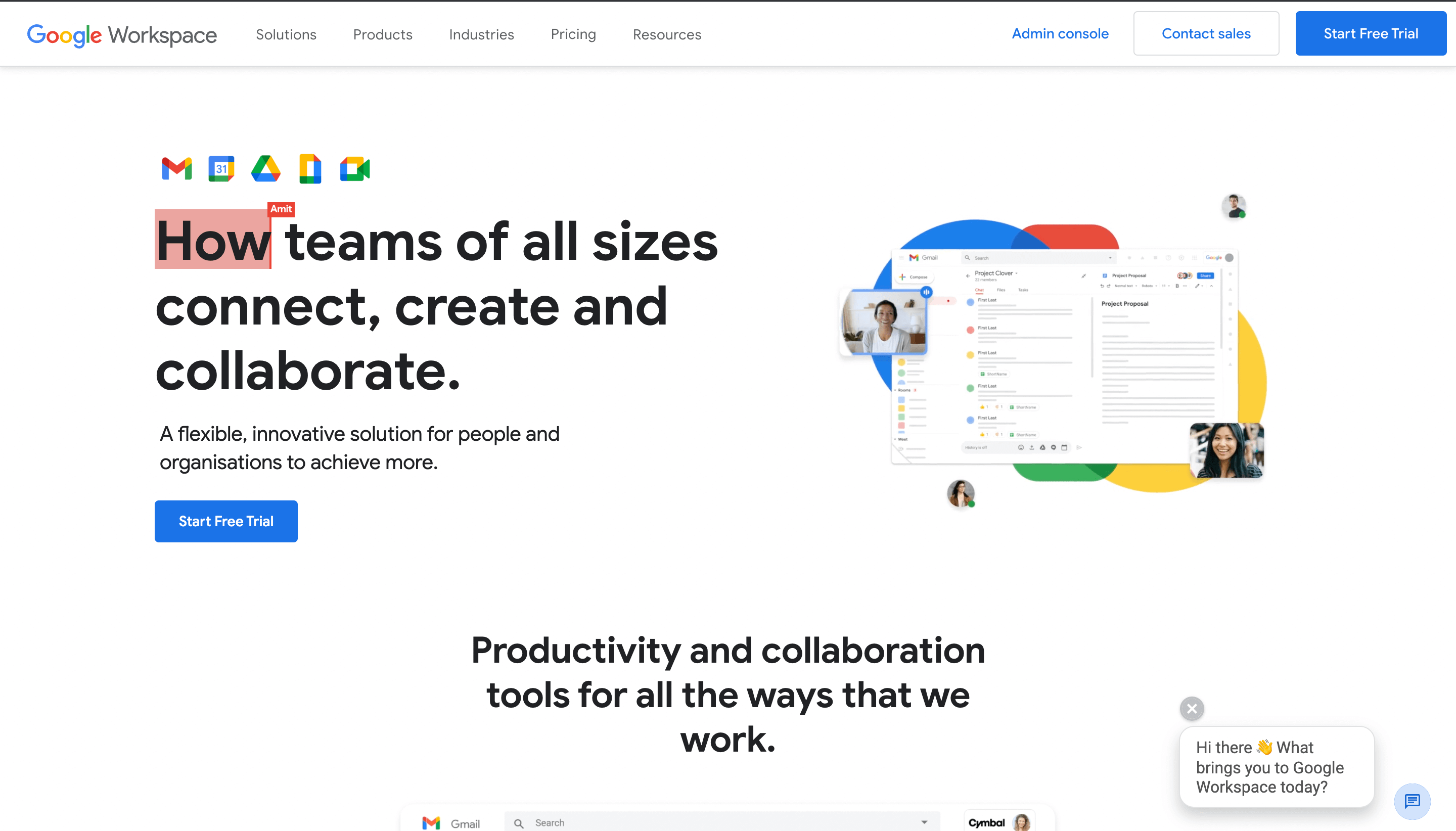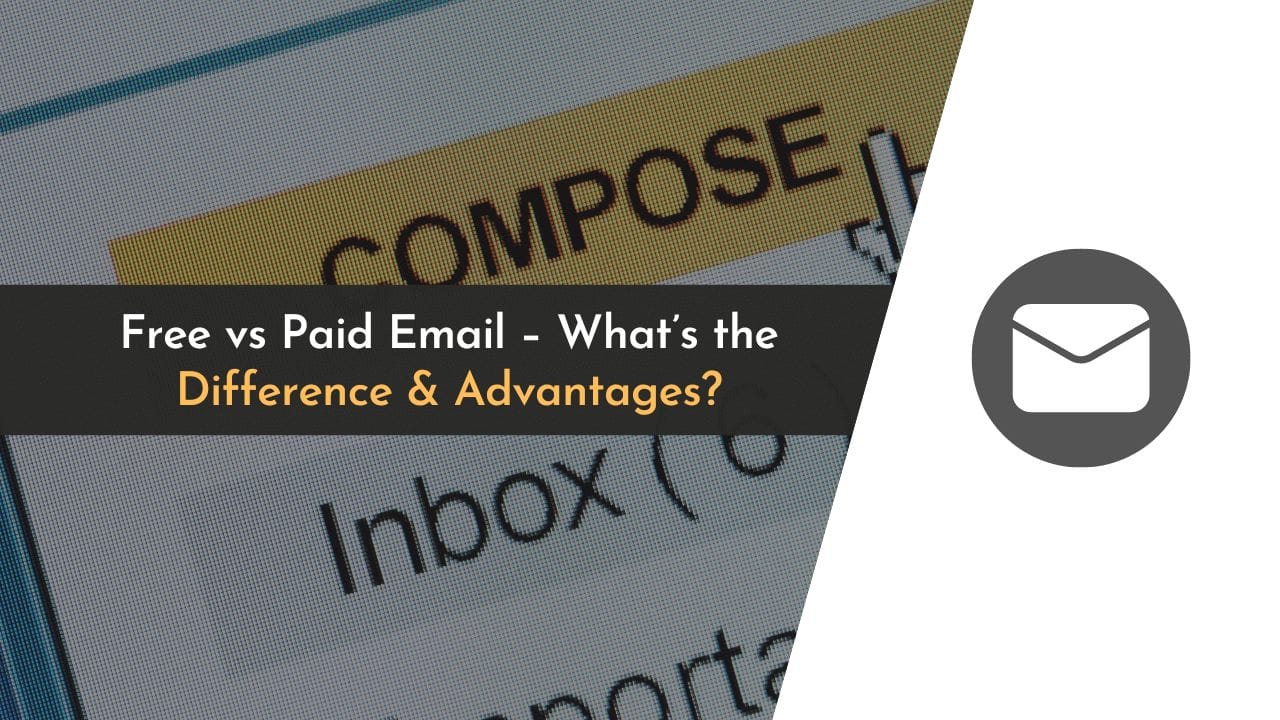Getting a domain name and hosting is probably one of the most essential parts of having an online business. If you want to have a website, you need these two things. Once you have your domain name and hosting, you can start building your website.
After you’ve built your website, getting a brandable email ID is probably the most important thing on your mind. You’ll see most people and businesses use an email address with their own domain name (ex: [email protected]).
Using an email like this looks more professional than using a generic email like [email protected] from services like Gmail or Yahoo. But the question is, which one should you use? Is it worth paying for an email service, or should you just stick with the free ones?
In this post, we’ll compare the differences between free and paid email services. We’ll also look at the advantages and disadvantages of each so that you can make an informed decision on which one to choose for your business.
So let’s get started…
Free Email vs Paid Email: An Introduction
When it comes to email services, there are two main types. We’re going to discuss both of them here.
- Free email, and
- Paid emails
Both of these have their own advantages and disadvantages, which we’ll discuss in detail later on. For now, let’s just get a quick overview of each type.
1. Free Email
As the name suggests, free email services are offered for free by various companies. These companies make their money in other ways, such as through advertising or by selling other products and services.

Some of these free email providers include Gmail, Yahoo Mail, Outlook, and AOL Mail. Depending upon the provider you’re using, they do offer a certain amount of storage space for your email, as well as other features like virus protection and spam filters.
Even free email services like Gmail and Yahoo offer some extra features like built-in chat/messaging, cloud storage space, and integration with other services. These features might make them more interesting to start with.
Benefits of using a free email address;
- You don’t need to pay anything to use them.
- They’re easy to set up – you can usually do it in a few minutes.
- They offer basic features like storage space, virus protection, and spam filters.
The drawbacks of using a free email address are:
- You don’t own the account or the data – the provider can delete your account at any time.
- They can show ads in your inbox or on the page where you read your emails.
- Some providers place limits on how much storage space you have or how many emails you can send or receive per day.
2. Paid Email
Paid email services are exactly what they sound like – you have to pay a monthly or annual fee to use them. These fees can vary depending on the provider, but they’re usually around $5-$10 per month.

For this fee, you usually get more storage space than with a free account, as well as other features like priority customer support, no ads, and extras like cloud storage space or integration with other services. You’ll also get a custom email address that uses your own domain name (ex: [email protected])
And if you ask me, I would recommend getting paid email from GSuite (aka Google Workspace) or Zoho for your business. I personally use GSuite for my business, and it works amazingly (Plus, you can claim 20% OFF using this link on Google Workspace).
The perks of using a paid email address
- You own the account and the data – the provider cannot delete your account without your permission.
- You don’t have to worry about ads in your inbox or on the page where you read your emails.
- You typically get more storage space than with a free account.
- Some providers offer extra features like cloud storage space or integration with other services.
Drawbacks of using a paid email address;
- You have to pay a monthly or annual fee to use them.
- They can be more complicated to set up than a free account.
What’s the Difference Between Paid and Free Email?
Now that we’ve seen the basics of free and paid email services, let’s take a more in-depth look at each type.
1. Privacy & Security
When it comes to privacy and security, there’s a big difference between free and paid email services.
With a free email account, you don’t usually own the account or data. The provider has the right to delete your account anytime they want, and they can also access and read your emails, which is another drawback of using free providers. In addition, free email providers typically have weaker security features than paid ones.
On the other hand, when you pay for an email service, you own access to your account and the data. The email provider cannot delete your account without your permission (obviously, when you’re doing everything under their T&C). They cannot even access your emails without your permission, and they have better security and features than free ones.
2. Storage Space
Another big difference between free and paid email services is their storage space.
When you’re on a free account, you typically get around 2-5GB of free storage space (15GB in the case of Gmail). This is enough for hosting a few thousand emails on the server – but if you’re dealing with many business-related tasks and have a lot of attachments, your storage space runs out quickly.
Paid email accounts, on the other hand, usually come with more storage space. For example, if you’re using Google Workspace (aka GSuite), you’ll get 30GB of storage space per user, and the ZOHO mail offers 5GB of storage per user (with the option to buy more).
This storage space should be enough for most people, but if you need even more space, some providers offer unlimited storage plans.
3. Ads
Ads are another important thing we need to consider while comparing free vs. paid email services.
Free email providers typically make money by selling ads. This means that you’ll see ads in your inbox and on the page where you read emails. And if you’re running your business on a free account, ads can be annoying and will drastically slow down your work.
And when we talk about paid email services, they will prevent you from any clutter on your screen and will not serve any type of ads. This is one of the main benefits of paying for email services.
4. Spam Filters & Virus Protection
All email providers have spam filters to keep your inbox clean, but free email providers usually have weaker spam filters than paid ones. This means that you’ll probably see more spam emails in your inbox rather than in the spam section.
This will definitely slow down your work. In addition, free email providers don’t offer virus protection, meaning if you open a malicious attachment, the virus can infect your whole system. These types of things generally don’t happen with paid email providers, so this is one less thing you have to worry about.
5. Accessibility & Better Customer Experience
Imagine a situation where you need customer support for your email account. However, the provider does not offer any support. This generally happens with free providers, who do not have the resources to provide customer support for every single user.
If you have a problem with your account or need help using the features, it can be difficult to get in touch with someone who can help you.
On the other hand, paid email providers usually have better customer support. They always try to provide a good experience for paying customers, and if you ever have an issue with your email or their services, you can easily get in touch with them.
6. Branding & Professional Appearance
When you use a free email account, the provider’s branding is usually front and center. This means that your email address will always include the provider’s name (e.g., [email protected]). In some cases where you’re running a SaaS product, it can make you look less professional.
Paid email providers usually allow you to use your own domain name for your email address. This looks more professional and can help you establish your brand. For example, you could have an email address like [email protected] or [email protected].
7. Extras, Add-Ons & Cost
After branding and naming, it’s important to consider the extras and costs of each type of email service. Free email providers typically don’t offer any extras, while paid providers often include extras like calendaring, task management, and more cloud space.
In addition, paid emails have more features than free ones. And if you’re on the free plan and need extra features like storage space or calendaring, you might need to pay for them separately. This can sometimes end up costing more than a paid email account.
8. Compatibility with Cross-Devices
The last but not least important thing you should consider is compatibility. Free providers tend to offer fewer features than paid providers, and they’re also less likely to be compatible with all devices and systems.
Paid providers usually offer more features and are more likely to be compatible with a wider range of devices and systems. This means that you’ll be able to use your account on more devices and access your email from more places.
Final Words!
Now that you know the main differences between free and paid email services, it’s time to decide which one is right for you.
If you just need a basic email account and don’t need any extras, a free email service might be a good option. However, if you need more storage space, better customer service, or extra features, you might want to consider a paid email service.
No matter which type of email service you choose, make sure to do your research and select a provider that’s reputable and has good reviews. This will help ensure that you have a positive experience with your email account.
So, what are you waiting for? Get a paid email address today and enjoy all the benefits it has to offer!

